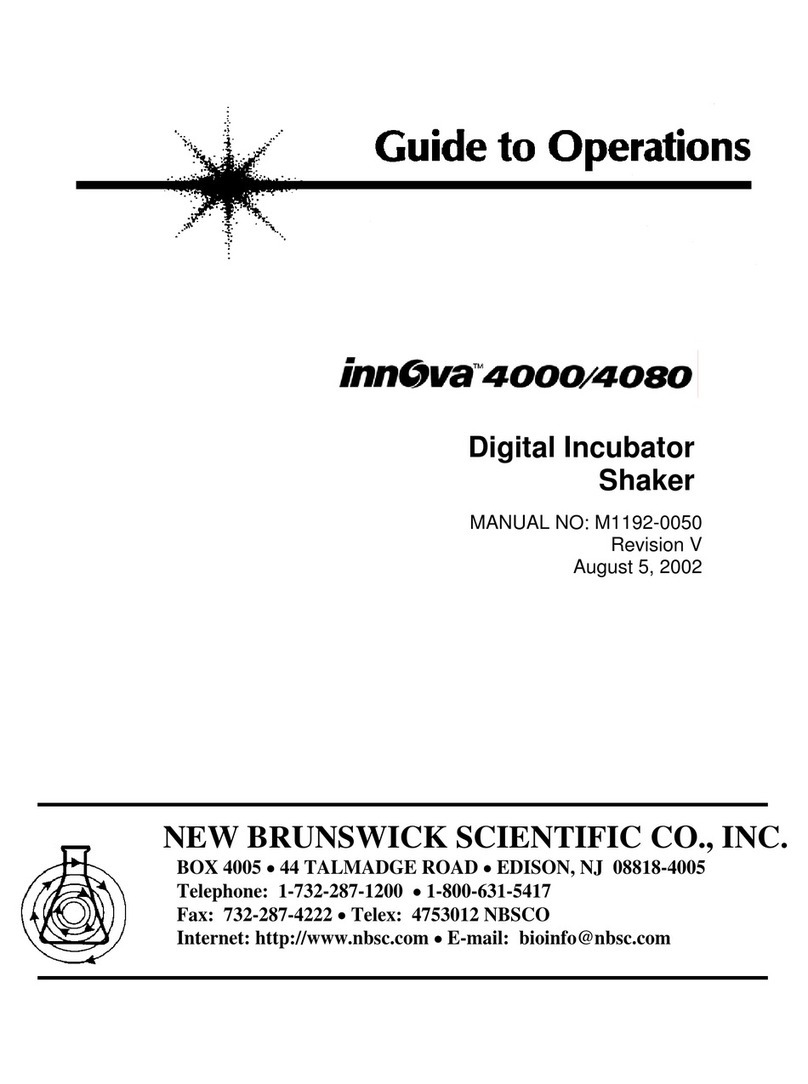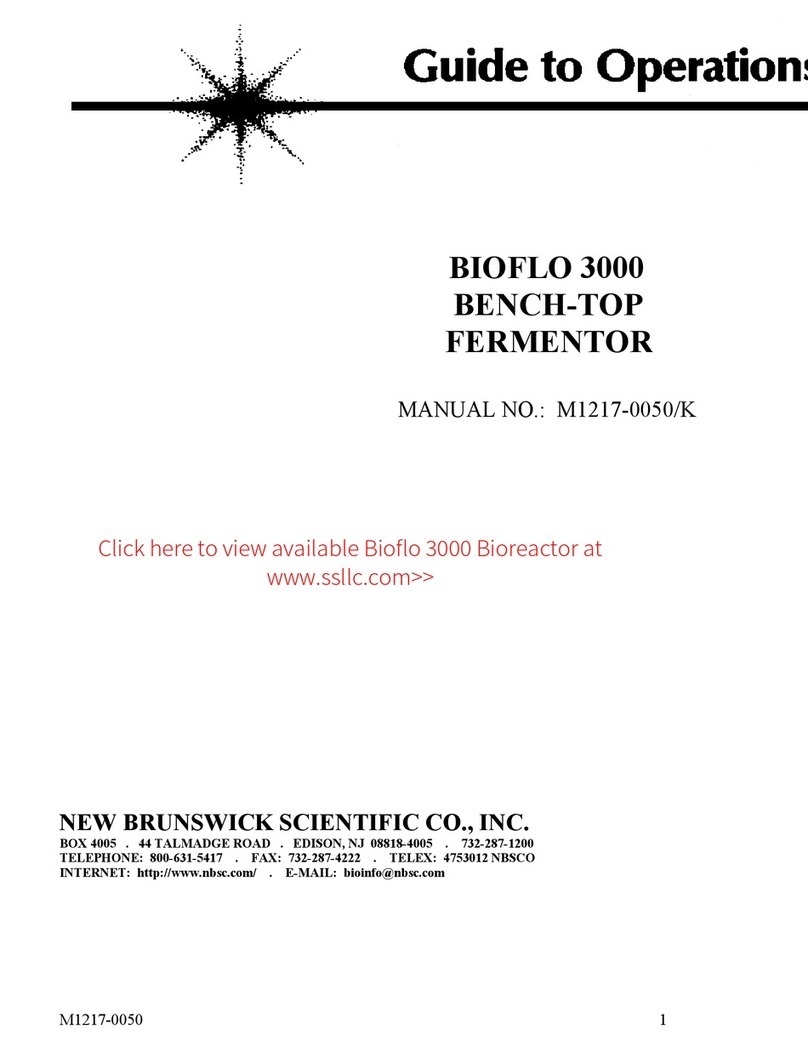
Great Bay Community College Document Number: 1.16.1
320 Corporate Drive Revision Number: 5
Portsmouth, NH 03801 Effective Date: 20May09
Page 3 of 20
Title: New Brunswick BioFlo 3000 Bioreactor SOP
8.2.7. If no leaks are observed, remove the water from the vessel by lifting the vessel
(still attached to the heat exchanger base) and pouring the water out into a
sink or container.
8.2.8. Place the baffle into the glass vessel.
8.3. Assemble the Headplate - Underside (Figure 3)
8.3.1. If necessary, attach the impellers to the agitator shaft. The lower impeller should
be flush with the base of the agitator shaft, and the upper impeller should be
approximately 6cm above the lower impeller.
8.3.2. Inspect the integrity of the O-rings on the thermowell, harvest tube and sparger
tube. Replace if worn or cracked.
8.3.3. Insert the thermowell into the thermowell port from the underside of the
headplate.
8.3.4. Adjust the height of the thermowell so that the base is approximately 2 cm above
the lower impeller.
8.3.5. Secure the thermowell in place with a nut by lowering the nut over the top of the
thermowell and hand-tightening it to the threads on the topside of the headplate.
8.3.6. Insert the harvest tube into the harvest tube port from the bottom of the headplate.
8.3.7. Adjust the height of the harvest tube so that the base is directly below the lower
impeller. Rotate the lower impeller by hand to make sure that there is enough
clearance for rotation without collision with the harvest tube.
8.3.8. Secure the harvest tube in place with a nut by lowering the nut over the top of the
harvest tube and hand-tightening it to the threads on the topside of the headplate.
8.3.9. Insert the sparger tube into the sparger tube port from the bottom of the headplate.
8.3.10. Adjust the height of the sparger tube so that the base is directly below the lower
impeller. Rotate the lower impeller by hand to make sure that there is enough
clearance for rotation without collision with the sparger tube.
8.3.11. Secure the sparger tube in place with a nut by lowering the nut over the top of the
sparger tube and hand-tightening it to the threads on the topside of the headplate.
8.4. Pour the cell culture media that will be used for the run into the vessel (refer to the
process SOP for media compostion).
8.5. Attach the Headplate to the Vessel
8.5.1. Place the headplate onto the vessel.
8.5.2. Secure the headplate to the top steel ring using the large thumb screws. Tighten
the screws in a crosswise manner.
8.6. Assemble the Headplate – Top Side (Figure 4)
8.6.1. Insert the tube of the sampler assembly into the sampler assembly port. Lower
the tube until the base is approximately half way between the upper and lower
impellers. Hand tighten the nut at the top of the tube.
8.6.2. Inspect the integrity of the O-ring at the bottom of the condenser. Replace if worn
or cracked.
8.6.3. Insert the condenser into the condenser port and secure in place by hand-
tightening the nut to the threads on the topside of the headplate. Make sure that
the barbed connectors are pointing to the left. Refer to Figure 1 for proper
orientation of the condenser.





























